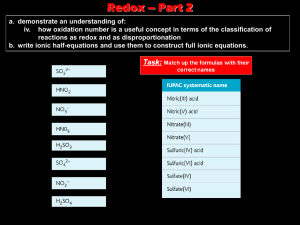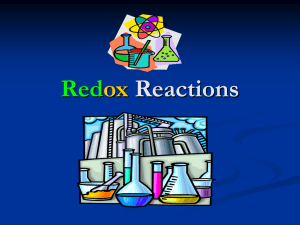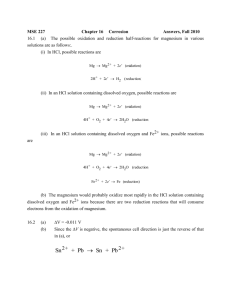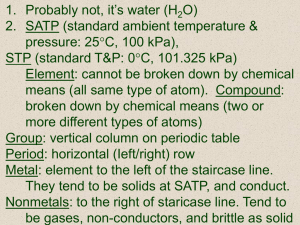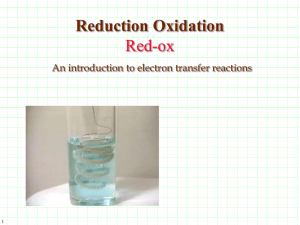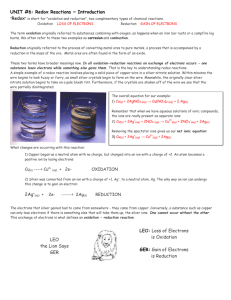Oxidation and Reduction
advertisement
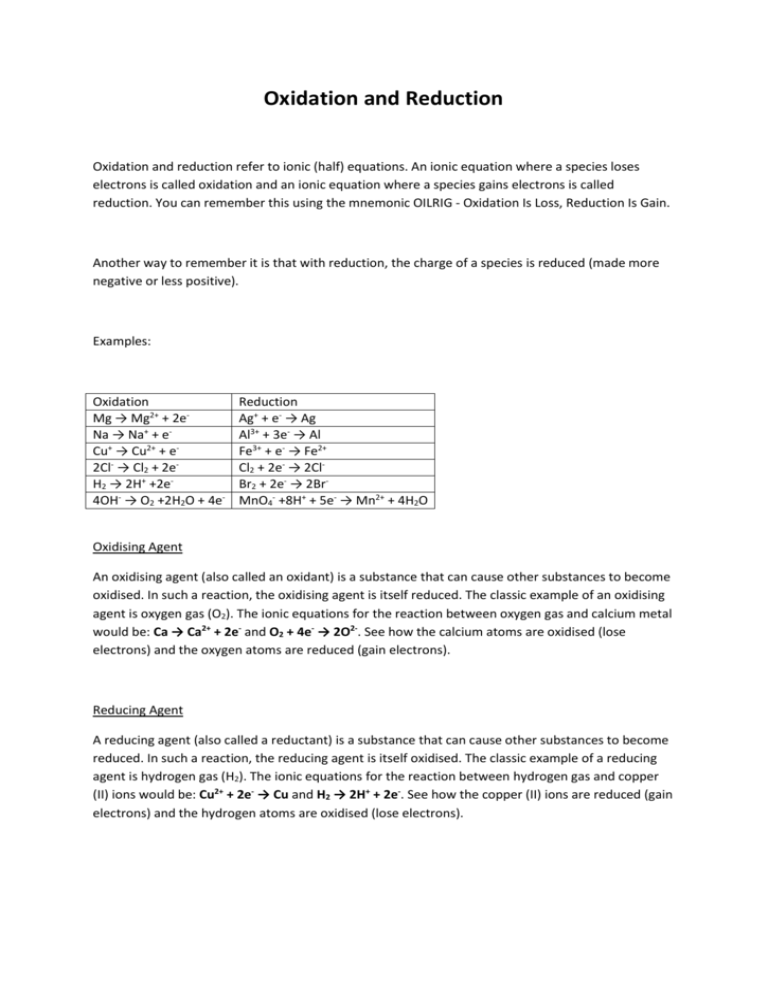
Oxidation and Reduction Oxidation and reduction refer to ionic (half) equations. An ionic equation where a species loses electrons is called oxidation and an ionic equation where a species gains electrons is called reduction. You can remember this using the mnemonic OILRIG - Oxidation Is Loss, Reduction Is Gain. Another way to remember it is that with reduction, the charge of a species is reduced (made more negative or less positive). Examples: Oxidation Mg → Mg2+ + 2eNa → Na+ + eCu+ → Cu2+ + e2Cl- → Cl2 + 2eH2 → 2H+ +2e4OH- → O2 +2H2O + 4e- Reduction Ag+ + e- → Ag Al3+ + 3e- → Al Fe3+ + e- → Fe2+ Cl2 + 2e- → 2ClBr2 + 2e- → 2BrMnO4- +8H+ + 5e- → Mn2+ + 4H2O Oxidising Agent An oxidising agent (also called an oxidant) is a substance that can cause other substances to become oxidised. In such a reaction, the oxidising agent is itself reduced. The classic example of an oxidising agent is oxygen gas (O2). The ionic equations for the reaction between oxygen gas and calcium metal would be: Ca → Ca2+ + 2e- and O2 + 4e- → 2O2-. See how the calcium atoms are oxidised (lose electrons) and the oxygen atoms are reduced (gain electrons). Reducing Agent A reducing agent (also called a reductant) is a substance that can cause other substances to become reduced. In such a reaction, the reducing agent is itself oxidised. The classic example of a reducing agent is hydrogen gas (H2). The ionic equations for the reaction between hydrogen gas and copper (II) ions would be: Cu2+ + 2e- → Cu and H2 → 2H+ + 2e-. See how the copper (II) ions are reduced (gain electrons) and the hydrogen atoms are oxidised (lose electrons).

